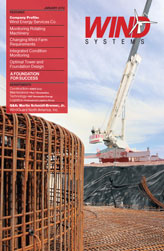I was attending a supply chain networking event recently when the discussion turned to problems within supply chains. Several of the senior executives at the table were complaining about spending millions on software and other technologies and still not seeing the results they’d expected. A friend at the table who knew my background asked what I thought. Of course I explained that I was not sure of all the issues concerning each of the companies at the table, and so I hesitated to give a succinct answer. I listed numbers issues that could affect supply chain efficiency, but my friend pinned me down and asked “what is the one thing that causes the most supply chain problems?” I paused and thought for a moment before responding. “Well, if I can only state one issue and only one, then I would say it’s variability.” Those at the table asked me to explain further, so I continued. “Variability will cause all sorts of supply chain inefficiencies. Variability can happen at any point within a supply chain, and these events can amplify throughout the supply chain, causing even more problems.”
Variability within a supply chain is the major factor preventing optimization of a supply chain. This holds true whether you are shipping small commodity items such as screws, or large project items such as wind turbine blades. To improve the efficiency of a supply chain you have to eliminate as much variability throughout the chain as possible. Sounds simple, but it can be exceptionally difficult based on the complexity of the supply chain, and the events that can have variability are numerous. What are some of things that can have variance with a supply chain? I categorize them as internal events and external events.
Internal events are things that can be controlled by the stakeholders in the supply chain. Some examples are items such as information, material, and execution. Examples of information variability are wrong information on commercial invoices, bills of lading, schedules, requests, and other types of communications between entities handling the cargo. We have all experienced a delay of a shipment due to incorrect information on a piece of paper. The higher the variability of information, the more likely it is that delays will occur. Time is taken to resolve miscommunications resulting in delays in the supply chain.
Material discrepancies can be as simple as not having enough pallets for all the cargo, or as complex as not having the correct crane to accommodate the load. Once again, these are variances to the requirements. Especially in project cargo transportations, stow, load, and lifting plans are created based the dimensions and weight of cargo. Deviating from the plan (a variance) could cause a delay in shipment.
People are responsible for the execution within the supply chain. If there are variances in the activity of people performing their jobs, it will result in variability within the supply chain. If a crew is late to a job or not trained properly, this will result in a variance, which in the end will lead to disruptions within the supply chain. Another example is your supplier compliance, and how well they deliver.
External events may or may not be within someone’s control. Weather is not controllable, but our response to it is. Are you prepared for inclement weather, and have you taken the proper precautions? Understanding the volume of traffic within your supply chain will allow you to plan better and eliminate as much variability as possible. Other examples of external events are labor rules and regulations and differences between state DOT regulations, including escorts and permits.
How can you take variability out of the supply chain? Start by focusing on the internal events that may cause the greatest variance. You can’t fix what you don’t measure, so take the time to measure what is happening. I would also apply quality control techniques such as statistical process control, root cause analysis, and Pareto identification. Once the internal events are under control you can turn your attention to external events. While they all may not be controllable, at least contingencies can be planned and implemented. Doing so will save both time and money.
Can all variability be eliminated? I don’t believe so, but some rather famous companies have certainly come close.

































